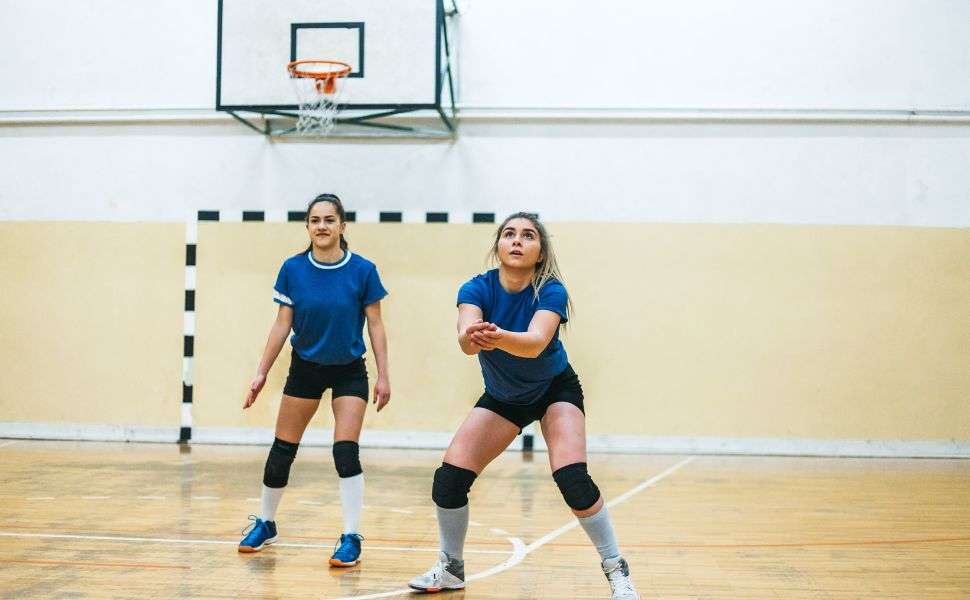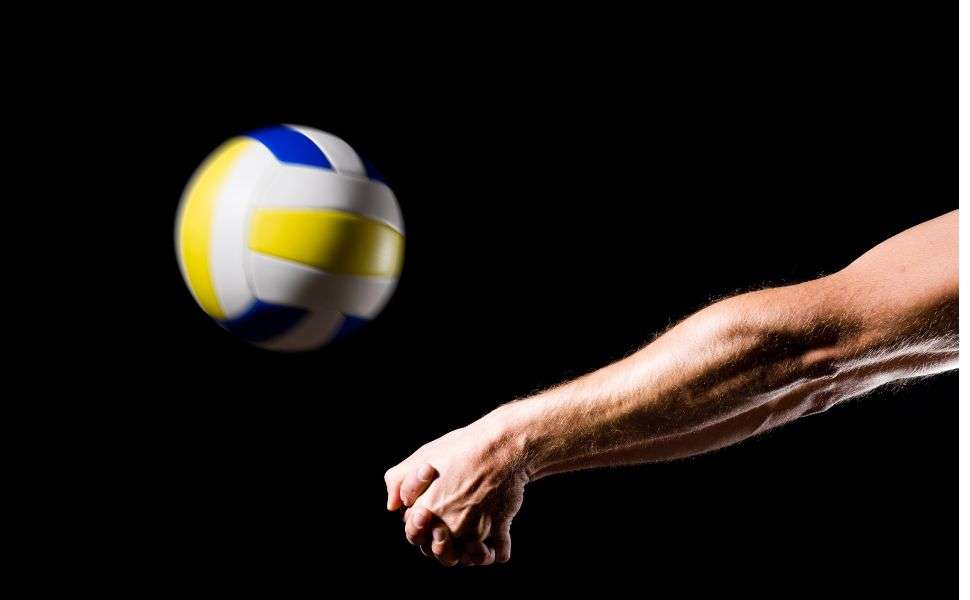Volleyball Training for Beginners: Where to Start
Essential Skills and Tips for Volleyball Beginners
By Ovanto.org Team

This article is in sync with our mission to contribute to the development of health culture and the growth of all disciplines of volleyball. We provide informative and educational content about volleyball training and the benefits of playing the sport.
Introduction:
Starting out in volleyball can be incredibly exciting, but it’s common to feel a bit overwhelmed by the range of skills and strategies involved. For beginners, building a strong foundation is essential to advance in the sport and enjoy the game to the fullest. This guide provides a clear pathway to help beginners develop the fundamental skills they’ll need on the court.
1. Mastering the Basics
Footwork and Stance:
Good footwork is a vital part of volleyball. It allows you to get into position quickly and maintain control over your movements. Start by practicing simple side shuffles and backpedals, which will help you stay agile without crossing your feet or getting off balance. Developing a low, athletic stance is equally important, as it keeps you ready to react to the ball and positions you for quick movements.
Passing (or “Bumping”):
Passing is a cornerstone of volleyball, and mastering it will enable you to set up plays and support your teammates. For beginners, practicing the forearm pass is key. Keep your arms straight and hands together, creating a flat platform to hit the ball. Work on controlling the height and direction of your passes, aiming for a specific target to build consistency. Remember, accurate passing is essential to keep the game flowing and to set up effective attacks.

Setting:
Setting is another fundamental skill and a crucial one for any volleyball player. Proper hand positioning is essential, so form a triangle shape with your fingers and practice tossing the ball upward with control. Start with stationary setting drills to get comfortable with your technique, then practice on the move and at various angles. A good set gives attackers the best chance to score, so take time to perfect this skill with repetition and feedback.
Serving:
Serving is how every play begins, and developing a reliable serve can significantly impact your game. Start with an underhand serve, which is easier for beginners to control. Focus on accuracy by aiming for specific spots on the other side of the net. Once comfortable, try overhand serves. With time, you can work on serve variations, such as jump serves, which add power and unpredictability to your game.

2. Building Strength, Agility, and Endurance
Volleyball is a physically demanding sport, requiring players to be both agile and powerful. Begin by incorporating basic strength and conditioning exercises into your routine. Exercises like squats, lunges, and push-ups build the core and leg strength necessary for strong jumps and quick movements. Agility drills, such as ladder exercises, are also valuable to improve your foot speed and reaction time.
Plyometric Training:
Plyometric exercises involve explosive movements, which are critical for volleyball. Try adding jump squats, box jumps, and burpees to your workouts, as these exercises improve your vertical jump and help with overall explosiveness on the court. Regularly practicing these movements will boost your ability to spike, block, and make quick saves during intense matches.
Endurance Drills:
Volleyball games can be long and intense, requiring endurance to maintain energy and focus. Incorporate cardio exercises, such as jogging, cycling, or interval sprints, into your training to build your stamina. Even short bursts of high-intensity interval training (HIIT) can be effective, as they mimic the fast-paced, stop-and-start nature of volleyball.
3. Learning the Rules and Positions
To play well, you need to understand the rules and structure of the game. Take time to learn volleyball’s basic rules, such as the scoring system, rotations, and the roles of each position on the court. Understanding the six positions—setter, outside hitter, opposite hitter, middle blocker, libero, and defensive specialist—will give you insights into how the team works together.
Observing Matches:
Watching volleyball matches is another way to deepen your understanding. Pay attention to how experienced players position themselves, communicate, and work as a team. This can be especially helpful for beginners, as it shows you how to apply the techniques you’re learning and how teams build strategies during a game.

4. Developing Volleyball IQ and Basic Strategies
Beyond physical skills, learning basic volleyball strategies will make you a more effective player. Simple strategies, like where to stand based on the ball’s position or how to communicate with teammates, can make a significant difference. Positioning is crucial—knowing where to be on the court at any given time helps prevent gaps in your team’s defense and sets up effective offensive plays.
5. Consistent Practice and Goal Setting
Improvement in volleyball requires consistent, focused practice. Create a routine that allows you to work on each of the core skills—passing, serving, setting, and footwork—at least a few times per week. Setting small, achievable goals, such as hitting a target with your serve or passing accurately ten times in a row, can keep you motivated and make each session more productive.
6. Getting Feedback and Learning from Others
Finding a mentor or attending a beginner’s class can make a huge difference. Experienced players can offer feedback to correct your form and give personalized advice. Small adjustments, such as how to angle your arms for passing or how to position your feet when moving, can improve your performance dramatically and prevent bad habits from forming.
7. Staying Positive and Enjoying the Game
Volleyball is a team sport that’s as much about enjoying the game as it is about improving skills. Celebrate each improvement, stay positive through challenges, and focus on the joy of learning something new. Finding friends or teammates who are also learning can make practice more enjoyable and help you stay motivated.

8. Taking Advantage of Volleyball Training Tools
For those looking to accelerate their progress, incorporating training tools specifically designed for volleyball can be beneficial. These tools can help beginners practice skills like setting, passing, and serving independently. They also allow you to focus on specific techniques and reinforce correct form, giving you a better foundation as you advance in the sport.
To help kickstart your training journey, consider using our volleyball trainers designed specifically for beginners. These tools can assist with skill development and offer structured ways to practice effectively on your own.
Conclusion
This article should give you a solid start, whether you’re a beginner looking to build core skills or someone who just wants to enjoy the game. Let me know if you’d like more details on any particular section!
Disclaimer: This article is for informational purposes only and should not replace professional training or fitness advice. While the article aims to provide a broad understanding of exercises and techniques to improve your vertical jump for volleyball, it should not replace personalized guidance from a certified fitness trainer or sports coach.
The authors and publisher are not responsible for any injuries, accidents, or outcomes resulting from the application of this information. Always consult with a qualified professional before starting any new exercise program or training regimen to ensure it is appropriate for your fitness level and physical condition.




